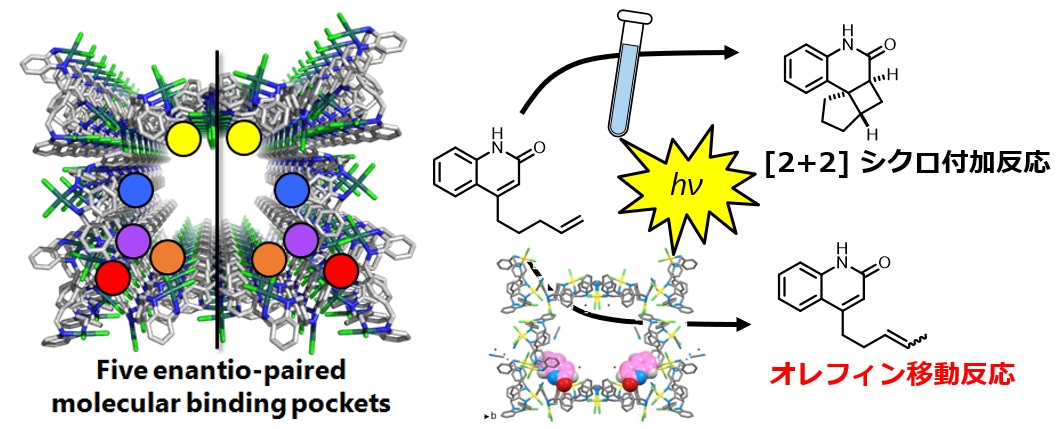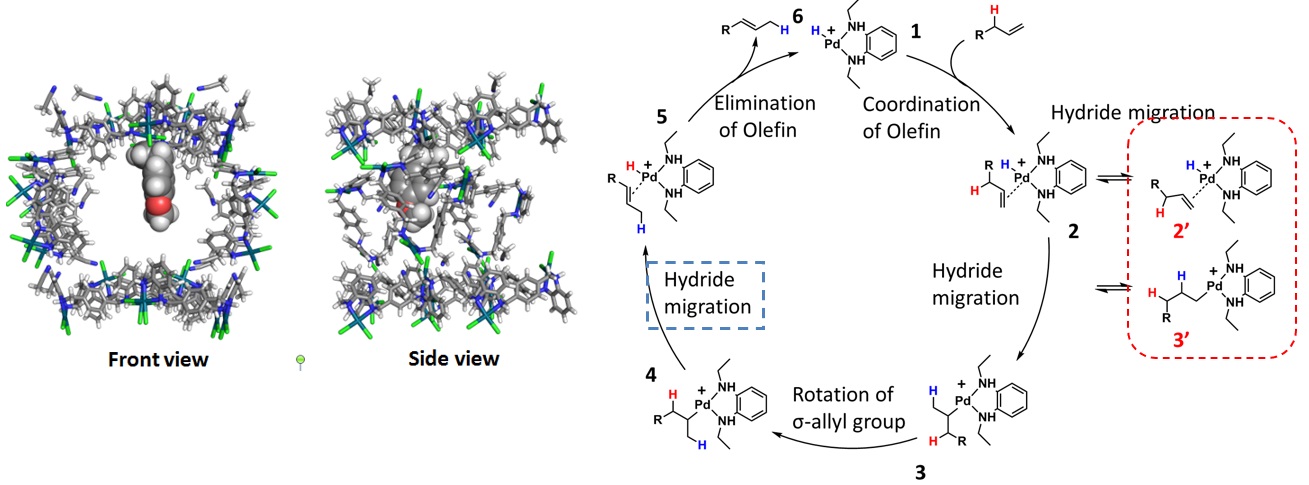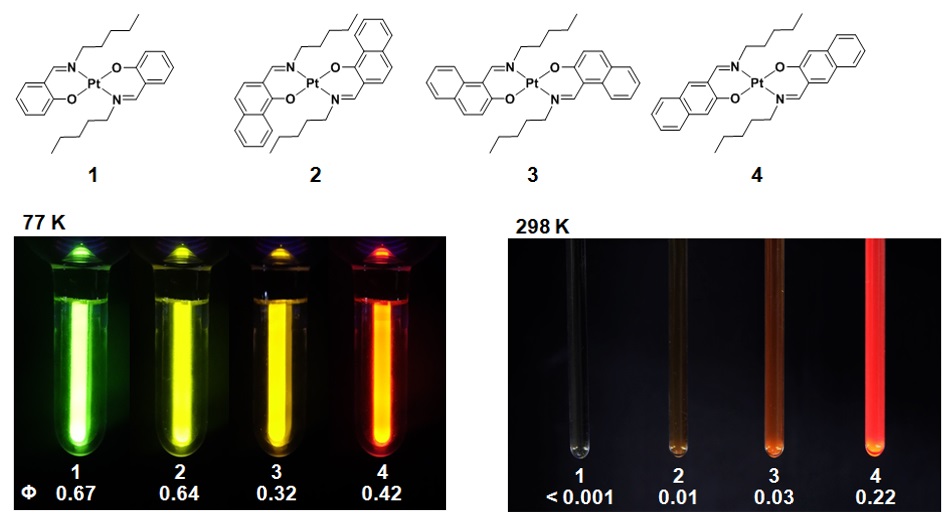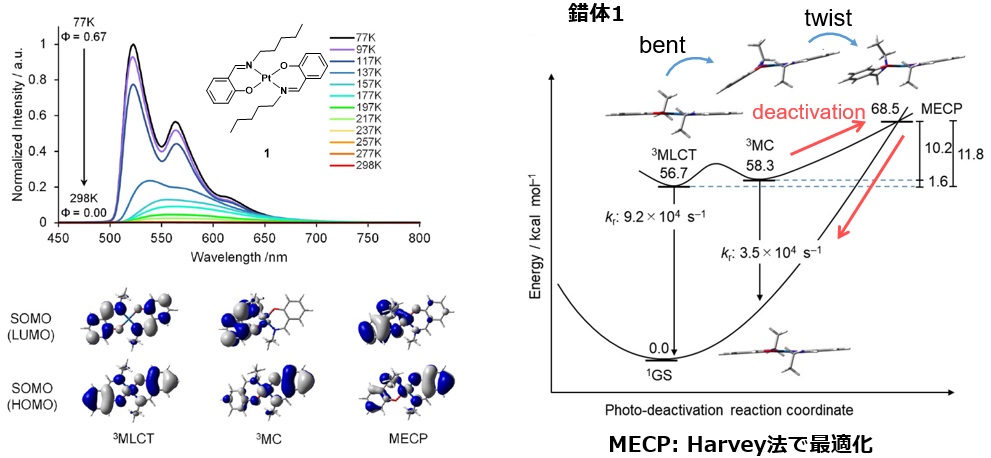Research(Coordination Asymmetry)
Representative works conducted under the Grant-in-Aid for Scientific Research Innovative Area (Coordination Asymmetry: Design of Asymmetric Coordination Sphere and Anisotropic Assembly for the Creation Molecules) (Planned research) “Structure, Physical Property and Reaction of Supermolecules with asymmetric metal crystal field) Masahiro Ehara (FY2016-FY2021)
Mechanism of olefin migration reaction in Metal-Macrocycle Framework (MMF)
Shionoya group (The University of Tokyo) has developed Pd-loaded Metal-Macrocycle Framework (MMF) which is formed by self-assembly. Various unique functions have been achieved with this MMF such as diastereo-selective absorption of chiral molecules and immobilization of acid catalysts. Recently, switching function of photo-reaction has been observed owing to controlling the space of this MMF.

We have clarified the mechanism of the generation of reactive site and the switching function of photo-reaction by collaborating with experimental group (J. Am. Chem. Soc. 2018). We demonstrate that the olefin migration reaction proceeds in “alkyl” mechanism and the rate-determining step is the proton-migration to Pd center. We succeeded to explain the isotope effect (1,2 D-shift) which was observed in the experiment (Chem. Asian. J. 2021).

Heat-resistant phosphorescence of π-extended Pt(II) complexes and its correlation with aromaticity
Naota group (Osaka University) has developed series of light-emitting Pt(II) complexes with various π-conjugation and structure restriction. They are focusing on the control of the emission energy variation and heat-resistant property of phosphorescence.

We studied the excited states of these π-conjugated Pt complexes. We found that there are characteristic local minima such as MLCT, MC and MECP, and clarified that the heat-resistant property of phosphorescence is anti-correlated with the aromaticity of the rings adjacent to Pt center (Chem. Eur. J.).

Electronic asymmetry of the condensed-phase Ag nanocluster
Nakashima group (Nara Institute of Science and Technology) has observed the circular dichroism (CD) and circularly polarized light (CPL) for condensed-phase Ag nanocluster (Ag29(DHLA)12) (Chem. Commun. 2017). Recently, they found that this Ag nanocluster has a chiral structure and observed a mirror-image CD spectra of the enantiomers which were separated by chiral column.

We clarified that Ag13(3-), a core of this nanocluster, has a superatomic electronic structure and the CD spectrum originates in the helical structures and interface electronic states of the adsorbates. The excited states are characterized as the transitions from HOMO (P-orbitals of Ag13 core and S p-orbitals) to LUMO (D-orbitals of Ag13 core) (Chem. Sci. 2020).


